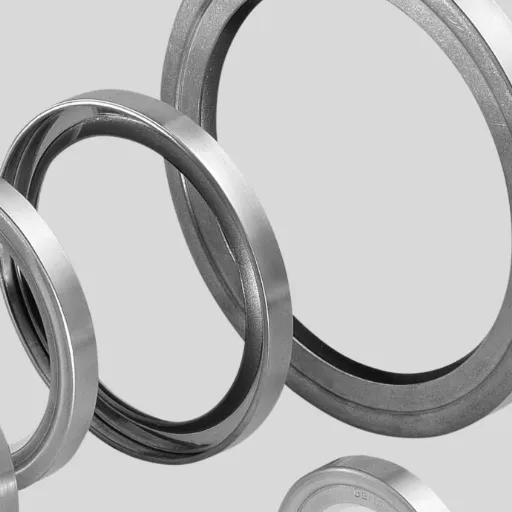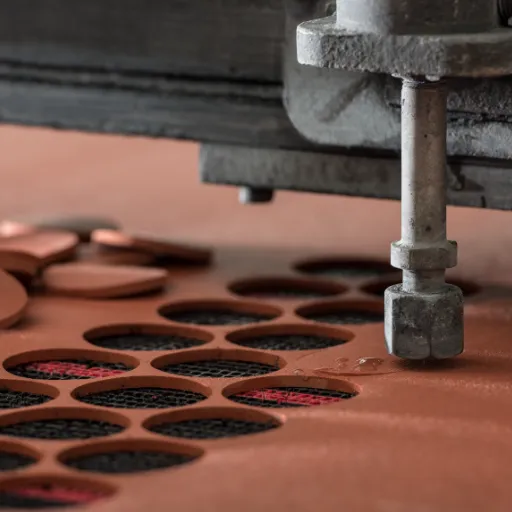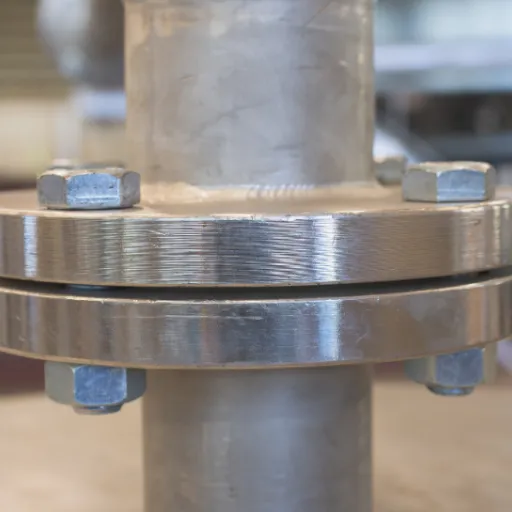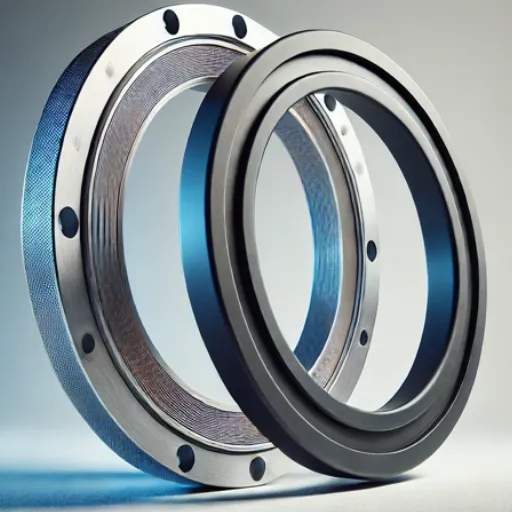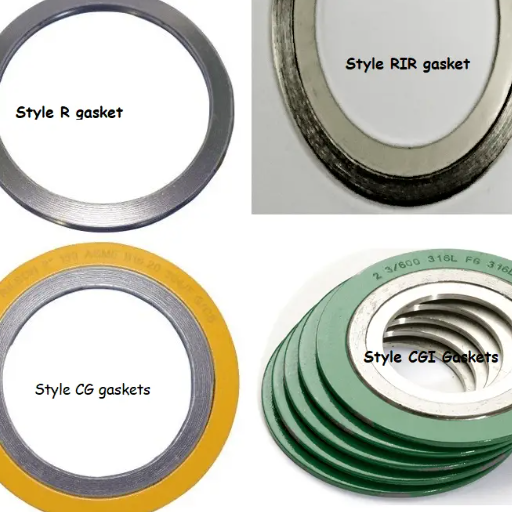Selection of the appropriate flange manhole is critical for the successful operation, safety, and long service life of many industrial systems. The question arises as to what considerations come into play in the selection of a flange manhole, i.e., considerations of material incompatibility, pressure and temperature ratings, and the type of application. In the chemical industry, food industry, or pharmaceutical industry, the appropriate flange manhole will guarantee against leaks, demands of operations, and industry code specifications. This article will take you through various considerations that will allow you to make the right choice that meets your operational requisites and guarantees long-term performance.
Understanding Manhole Components

Manhole components are essentially designed to provide functionality and endurance while subjected to a harsh working environment. Major components comprise the frame, cover, and sealing mechanisms. The frame constitutes the supporting skeletal system that firmly anchors the manhole in place; the cover provides access and protection to the equipment or contents within. Sealing mechanisms such as gaskets or O-rings are very important so that leakage does not occur, and the system maintains its integrity when put under varying pressures and temperatures. Inspection ports or flanges may also be present to aid in maintenance and operational efficiency. Hence, knowledge about these components is critical for selecting and maintaining manholes that comply with specific industry requirements.
What is a Manhole?
A manhole is a kind of access allowing persons into underground or enclosed terminated systems, such as sewage lines, utility tunnels, or drainage, for inspection, maintenance, and repairs. It is meant to provide for safe and convenient entry when such systems require it, seal up, and secure the system under normal operating conditions. Typically, manholes are made of concrete, steel, or composites to withstand whatever environmental and structural stresses come their way. These manholes are thus an important factor in the efficient and secure maintenance of infrastructure systems.
Types of Manhole Covers
| Key Point | Details |
|---|---|
| Material | Cast Iron, Concrete, Composite, Fiberglass, Plastic |
| Shape | Round, Square, Rectangular |
| Depth | Shallow, Normal, Deep |
| Usage | Sewer, Stormwater, Maintenance |
| Features | Durability, Weight, Resistance |
| Regulations | EN 124, FACTA |
Importance of Flange in Manhole Design
Flanges are important members in the manhole design to ensure that covers and frames are tightly sealed, preventing the ingress of water, dirt, etc., into the system, thereby protecting the operational integrity of the manhole. Flanges also provide strength to the structure by distributing loads and resisting deformation under heavy loads. This provides a durable and safe connection along the flange, thus being one of the primary elements of efficient manhole design.
How do I select the right Flange Manhole?

How do I select the right Flange Manhole? Selection considerations for a flange manhole should include material, size, and installation environment. Consider the material that would perform best given the conditions expected in the application: use corrosion-resistant types such as stainless steel in harsh environments, while cast iron will do in ordinary situations. Size should be compatible with the specifications so as to integrate properly into the system. Consider also the loads the flange manhole would be submitted to, given expectations on traffic or weight at the site. Analyzing these factors properly will guarantee performance and safety for the chosen flange manhole.
Factors to Consider
When selecting a flange manhole, material selection should be one that provides for durability and longevity, which depends on environmental conditions and usage requirements. For example, search data increased interest in corrosion-resistant materials, underscoring the growing need for stainless steel in locations exposed to high humidity or chemical exposure. This trend draws importance to selecting alloys or protective coatings capable of resisting particular site challenges while maintaining structural integrity over time. The combination of data-driven insights with thorough site assessments will ensure that the selection is well-informed and reliable.
Manhole Cover Size and Load Class
Manhole cover size and load class are crucial considerations directly impacting their durability and safety in an infrastructure project. Search trends express a surge in attention to choosing the proper manhole cover size and strength, especially in urban and industrial areas where traffic load differs extensively.
Usually, manhole covers are sized from 20 inches to 36 inches, technically in diameter, while there are square and rectangular sizes for special applications. Load class of a manhole cover means the capacity of pressure or weight it can stand, under different classifications such as A15, B125, D400, and F900, suitable for zones ranging from straight pedestrian to heavy industrial.
There is an increased possibility that there are searches for the D400 class cover, for its use in busy roadways for vehicular traffic of almost 40 tons. Aside from that, there is growing acclaim for corrosion resistance as stainless steel and composite materials are considered the best for durability in exposed areas. Assessment of site-specific requirements alongside up-to-date data enables selection of the best manhole covers that meet the performance and safety requirements.
Different Materials for Manholes
Manhole covers are manufactured from several materials, each being chosen in light of particular site considerations, which include loading requirements, environmental implications for longevity, or life span. The most common materials include cast iron, ductile iron, stainless steel, concrete, and composite materials.
Cast Iron and Ductile Iron: Traditional choices for manhole covers by virtue of their ability to stand loads and their durability. Ductile iron offers increased resistance to impact and cracking and hence is preferred in heavy-traffic urban roads.
Stainless Steel: For corrosion-resistant qualities, stainless steel is suitable in an environment exposed to saltwater or chemicals, such as in coastal locations or industrial sites. The initial high cost could be recouped through its lifespan and low maintenance expenses.
Concrete: Typically, concrete manhole covers are used in conjunction with other types of materials when heavy-duty strength is required in rural or low-traffic zones. They are also cheaper for many municipalities.
Composite: Increasingly preferred because of their lightweight properties, composite manhole covers are easier to handle, thus reducing installation and maintenance costs. Another advantage of composite materials is that they have excellent anti-corrosive properties and are environmentally friendly, thus serving sustainability.
Composite materials are becoming increasingly prominent in the industry. Lighter but equally robust, these covers fit in with modern infrastructure requirements that call for easy transport and decreased injury risks during handling. Marrying innovation in materials with advanced engineering, present-day manhole designs make sure of safety, sustainability, and performance in a rapidly transforming urban landscape.
Flange Types and Their Applications

Flanges are considered connecting components between pipes, valves, pumps, and any other equipment used in numerous industries. Each type of flange has been designed for certain purposes and application specifications:
– Weld Neck Flange: Used in a high-pressure setting where welding will provide permanent construction; hence, it is popular in oil and gas or chemical industries.
– Slip-On Flange: Easy to weld in place because it is slipped onto the pipe. It is used during low-pressure and low-temperature applications.
– Socket Weld Flange: For small pipes and high-pressure systems, also providing a smooth flow through its socket-like connection.
– Blind Flange: It is meant to obstruct a pipeline or an opening. Often it is used for the sake of maintenance or to close systems for a short time.
– Threaded Flange: Screws onto a pipe, best fit for connections without welding, specifically in low-pressure and low-temperature systems.
– Lap Joint Flange: Works with a stub end to allow easy alignment and frequent disconnections. Used widely in situations requiring cleaning or inspection.
These flange types are contrasted with one another in different conditions and scenarios. They make it possible the incur seamless and safe operations on the pipeline and connected systems.
Weld Neck and Blind Flanges
Weld Neck Flange: Designed for high-stress applications such as high temps and pressures, weld neck flanges normally have a long tapered hub for additional strength and resistance to fatigue. They butt-weld to a pipe to provide the strongest and leak-proof connection. Being considered the most durable, these flanges find their use widely for the critical applications in oil and gas, chemical processing, and power generation industries.
Blind Flange: This type of flange is used to close caches or to a pipeline. It helps to shut off systems, either permanently or temporarily. It has no bore, allows pressure testing inside the system, or blocks flow when needed. It is mostly used during maintenance, inspections, and repairs, allowing the system to maintain its integrity.
In critical working environments where macro-level requirements are being demanded, these highly capable flange types can convincingly assert the presence of safety, reliability, and efficiency amongst pipelines.
Plate Flanges vs. Other Flange Types
In principle, a broad variety of flanges are flat, which accounts for their relatively simple manufacturing and installation. This particular type of plate flange finds its use in low-pressure systems where the strength and toughness are moderately low, and there are no requirements for atmospheric or thermal extremes. Other flange types would go about specialized purposes; for example, blind flanges temporarily seal systems completely. Plate flanges are superb at joining simple systems needing little mechanical force. Worthy of their inexpensive price tag, plate flanges are prevalent in industries where operations rarely press upon the need for complex piping.
Carbon Steel vs. Cast Iron Manholes
The main differences between carbon steel and cast iron manholes are in the material properties and practical applications. Carbon steel manholes are strong, rather durable, and flexible; thus, they resist high impacts and are adaptable to varying types of stresses. They are also lighter than cast iron and assist in reducing the installation and transport problems. Cast iron manholes have a great deal of resistance to corrosion while being extremely hard, which makes them suitable for static applications in harsh conditions. Even though cast iron normally stands better in corrosive environments, carbon steel can be treated or coated to give better longevity, providing a versatile option. Thus, the choice between the two may depend essentially on the requirements of the system, including environmental exposure, load conditions, and cost.
ASME Standards for Manhole Selection

Manhole selection according to ASME standards follows criteria of safety, durability, and compatibility with operational requirements. Based on the provisions of ASME Section VIII, Division 1, manholes are designed to meet established criteria in size dimensions, material specifications, and pressure rating suited to the intended application. The selection of materials has to conform to the operating environment defined by temperature, pressure, or chemical exposure. Welding or bolt-type sealing is considered to provide pressure containment that would prohibit leakages. Finally, ensure that detailed inspection and quality assurance are carried out in line with the recommendations of the ASME codes to achieve safe installation.
Overview of ASME Guidelines
It is this organization that sets detailed standards and codes to govern the design, manufacturing, and maintenance of equipment and systems with the ultimate guarantee of safety, reliability, and efficiency. These guidelines are beneficial in fields such as pressure vessel engineering, piping systems, and energy industries. The most significant code-setting provision for boilers and pressure vessels is provided by the ASME Boiler and Pressure Vessel Code (BPVC). The Code includes rules for identifying materials, testing methods, and quality controls to minimize risks when under extreme operating conditions. To ensure compliance with the code, it is encouraged that the latest standards be integrated with the ASME guidelines. However, further compliance enables an environment that indirectly spurs innovation with primary emphasis on hazard reduction.
Load Ratings and Sizing
Load rating and sizing of equipment are vital elements in guaranteeing efficiency, safety, and durability, especially in industrial applications. The load rating means the maximum amount of force or load that an equipment component can safely hold under stated conditions. Incorrect sizing or lack of interpretation of load ratings may lead to equipment failure, more maintenance costs, and hazardous situations.
In dealing with the question of how to maximize load ratings and sizing for operational success, one presents a data-driven approach. Leveraging the latest technological tools and resources, such as computational modeling and real-time monitoring systems, is very helpful in predicting the performance when exposed to varying conditions. In particular, employment of robust algorithms enhanced by recent advancements stemming from tools in the form of data analytics solutions creates a more precise level of calculation and decision-making. By coupling ASME standards with today’s data-driven approach, industries move towards compliance with minimum time and effort, thus making their operations more streamlined with less downtime and better return on investment.
Compliance with Industry Standards
Ensuring compliance with industry standards is crucial for maintaining operational excellence and adhering to regulatory requirements. Adopting ASME-compliant practices ensures that machinery and processes meet safety and performance benchmarks, minimizing risks and enhancing reliability. By integrating these standards with advanced technologies like predictive monitoring systems and data analytics tools, organizations can identify potential inefficiencies, address issues proactively, and maintain consistent quality. This approach not only safeguards compliance but also drives innovation and operational efficiency across industries.
References
- Yale University Design Standards
This document provides general layout requirements for manhole configurations and other design standards.
Read more here - Steam and Chilled Water Utilities Design Guidelines
This guide discusses the selection and placement of components, including manholes, in utility systems.
Read more here - Charlotte Water Gravity Sanitary Sewer Design Manual
This manual includes details on sewer pipe slopes, diameters, and flange ring configurations for manholes.
Read more here - Top Flange Manhole Suppliers in China
Frequently Asked Questions (FAQ)
What are the different types of manhole covers available?
There are various types of manhole covers, including round manhole covers, rectangular manhole covers, and recessed manhole covers. Each type serves a specific purpose and is designed for different applications, such as traffic load or utility access. For example, manhole covers round in shape are common in road applications due to their ability to roll and not fall into the opening. Other options include ductile iron manhole covers, which offer high strength and durability. Selecting the right type is crucial for ensuring safety and functionality.
How do I choose the right flange type for my manhole?
Choosing the right flange type for your manhole involves considering several key factors to consider, such as the application, load rating, and environmental conditions. For instance, if the manhole will be exposed to corrosive environments, materials like galvanized steel or carbon steel may be more suitable. Additionally, different flange types, such as weld neck flanges or blind flanges, have specific applications depending on the pressure and temperature requirements. Ensure that the flange can withstand the expected load and environmental conditions for optimal performance.
What is the importance of manhole cover size?
The manhole cover size is critical for ensuring a proper fit and functionality. A manhole cover doesn’t just need to cover the opening; it also needs to provide a watertight seal to prevent debris and contaminants from entering. If the cover is too small, it may not provide adequate coverage, while a cover that is too large may not fit securely. Thus, measuring the dimensions accurately and selecting manhole covers round or square or rectangular manhole cover based on the specific requirements is vital for effective installation.
Can flange manholes be used in high-pressure applications?
Yes, flange manholes can be designed for high-pressure applications, but it is essential to select the appropriate materials and flange types. For high-pressure environments, flanges that are rated for high temperatures and pressures should be chosen. It’s important to ensure that the selected flange can withstand the conditions it will face, whether in oil and gas industries or other high-pressure environments. Utilizing proper welding techniques and materials, like carbon steel or stainless steel, can enhance the durability and integrity of the manhole structure.
What are the benefits of using cast iron manhole covers?
Cast iron manhole covers offer several benefits, including high durability, load-bearing capacity, and resistance to environmental factors. These covers are particularly suitable for urban areas where heavy traffic can be expected. Additionally, cast iron is less prone to deformation compared to other materials, ensuring a long service life. When selecting a cast iron cover, ensure that it meets the required load rating and is designed for the specific application. They also provide a watertight seal, making them ideal for various installations.

